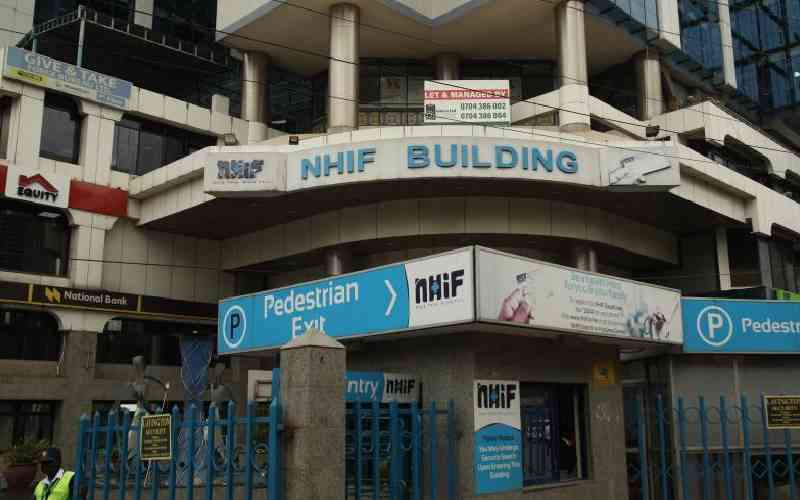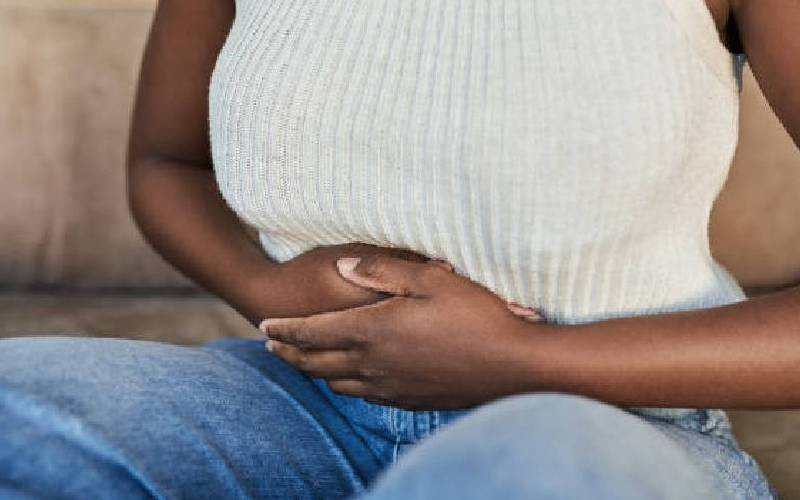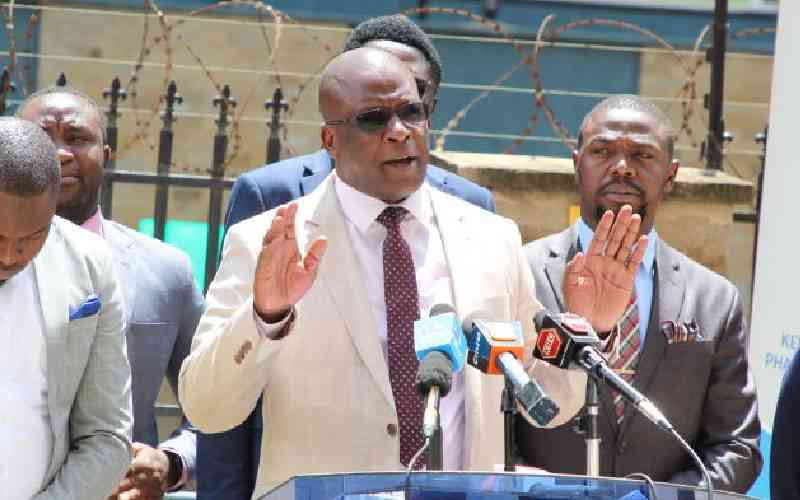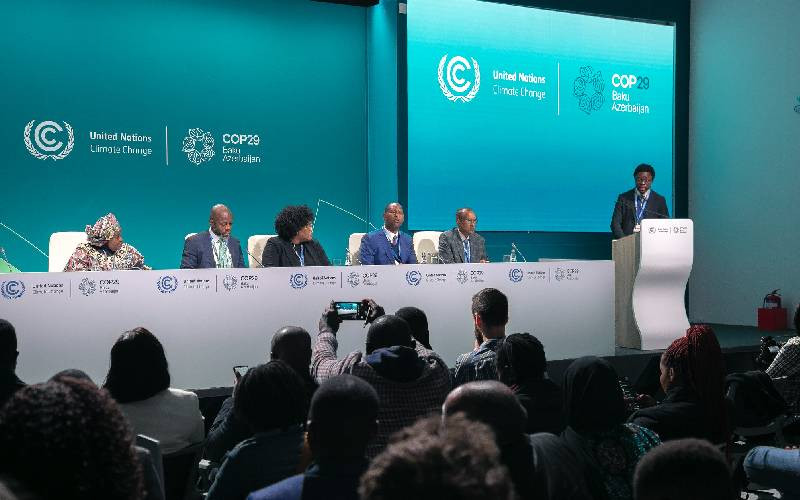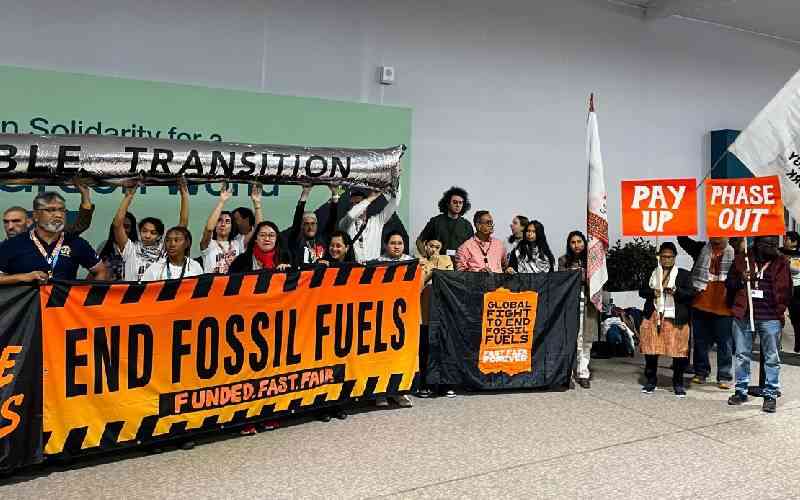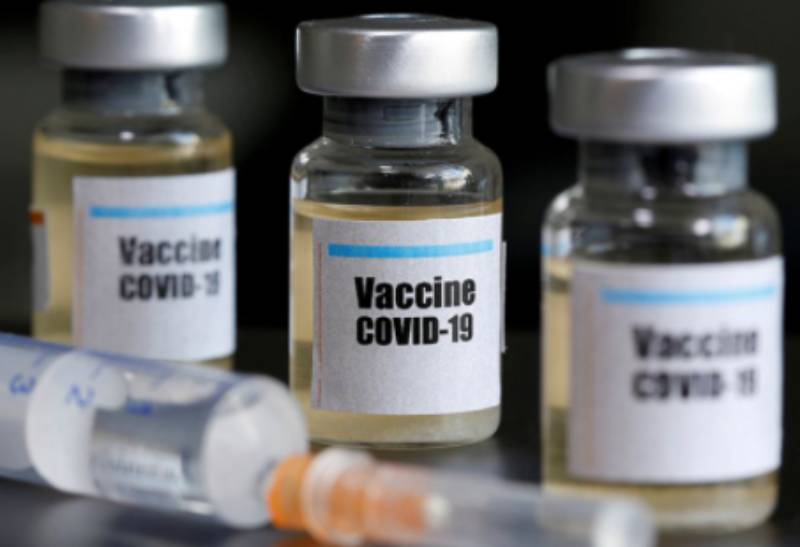
Kenyans might have to wait for about a year to get the much-awaited Covid-19 vaccine.
According to a draft Ministry of Health vaccination rollout plan, the first group will be vaccinated in the third quarter of the next financial year, that is from January 2022.
According to the report that is yet to be made public, the ministry will take “all hands on deck approach” to vaccinate as many people as possible.
But there has been contradicting information on the vaccine rollout plan, with the Health ministry’s Director-General, Patrick Amoth, saying the doses are expected to arrive in Kenya by the end of this month.
“…next two weeks then roll out shortly thereafter,” said Dr Amoth yesterday in a text message.
On December 30, 2020, Health PS Susan Mochache said AstraZeneca was produced with Kenyan input and will be in the country by April this year.
“It is just about like five dollars a dose…April is when you can safely say, the vaccine will be in Kenya and really available in every corner,” she said.
Last month, Mercy Mwangangi, Health Cabinet Administrative Secretary (CAS), said the first phase of the vaccine would be rolled out from mid-February to June, targeting 1.25 million Kenyans.
Dr Mwangangi said the ministry had established a task force, chaired by Dr Willis Akhalwe, to oversee smooth introduction and deployment of the vaccines.
In December, Health Cabinet Secretary Mutahi Kagwe said consignments of the vaccines were expected in the country last month.
“We have ordered vaccines, and we have made it clear that there are protocols that we are going to use because those are for the first-line workers,” he said.
Kagwe said the AstraZeneca vaccine would be made available in the first quarter of this year.
But in the new document dubbed, ‘Ministry of Health National Covid-19 Deployment and Vaccination Plan 2021’, the rollout will take place in the third quarter of the 2021/22 financial year.
The country is projected to receive 4.1 million doses of Oxford/AstraZeneca vaccine, according to an announcement by GAVI-Covax.
Obtaining the vaccine, storage, training, planning and distribution, will cost taxpayers a total of Sh34 billion.
The document in our possession indicates that the State plans to obtain the vaccine from Global Access (Covax) through the United Nations Children’s Fund (Unicef), which will manage shipment up to the delivery point.
As at February 11, the country had reported a total of 102,353 cases of Covid-19, at least 1,794 deaths and 84,790 recoveries from the virus that was first reported in the country on March 12, 2020.
The vaccine rollout plan will be in three phases, starting in the third quarter of the current financial year.
Once the consignment is cleared at the port, the plan is to transfer it to Central Vaccines stores in Kitengela, Kajiado County, from where they will be distributed to the nine regional depots across the country.
Apart from Kitengela, the other depots are in Nyeri, Meru, Nairobi, Nakuru, Eldoret, Kakamega, Kisumu and Garissa.
Mombasa has a depot, but is currently nonfunctional, according to the document.
“The amount of time the vaccine is held at the port of entry usually does not exceed 48 hours,” reads the plan.
The vaccines available as part of Covax include Pfizer/BioNTech, Moderna, Oxford/AstraZeneca, Johnson & Johnson, Sinopharm and Sinovac.
Effectiveness concerns
It appears from the document that despite current global concerns about these vaccine’s effectiveness against the new coronavirus variants, the Ministry of Health supports acquisition of AstraZeneca due to its low price and cold chain requirements of 2 to 8 degrees Celsius.
In addition, the government is confident that having been pre-qualified by the World Health Organisation (WHO), the vaccine is safe for use.
The proposal suggests that some counties will collect the vaccines from the depots, while others will be delivered by air freight for efficiency.
On safe storage of the vaccine, the report states that the country has capacity for both positive and negative temperatures in all the nine regional stores.
“The standard of the depots has been confirmed through the 2013 Expanded Programme on Immunisation (EVMA) and WHO EPI logistics forecasting tool of 2014,” reads the report.
Other newly established depots are Turkana, Wajir and Mandera, with net refrigeration volume litres of 13,330, and 542,813 and 813, respectively.
The ministry notes that from the main depots, the vaccine distribution chain is expected to follow the existing distribution patterns, from the national to sub-county levels.
But the ministry revealed that there may be cases where frequency of delivery cycles will increase because of shrinking cold chain capacity.
Proper storage of the Oxford/AstraZeneca and Johnson & Johnson vaccines would require some sub-county stores in Kajiado North, Ruiru, Athi River, Embakasi Central and Kasarani.
The storage will take on a demand that will possibly be straining their physical capacity to manage these new refrigerators.
According to the vaccination plan, font-line health workers will be the first to get the jab. The health workers will have to travel to regional sub-county storage facilities through identified Level Four and Five hospitals for the jabs.
Vaccines with negative storage temperatures of -20 degrees will be applied first.
To successfully roll out the vaccination and reach out to all the target population, the government plans to use non-traditional vaccine delivery.
Special clinics will be established to administer the jab to people with comorbidities like diabetes, cancer and hypertension.
An Electronic Logistics Management Information System (eLMIS) christened ‘Chanjo’ will be used to manage vaccine stock.
The gadget will monitor vaccine cold chain management, and provide an immunisation data dashboard that presents the vaccine coverage, stock levels and integrated indicators for immunisation performance.
“The system aims to increase visibility on stocks, reduce the frequency of stock outs and to increase the availability of data and its use for management decision making,” reads the document.
Early vaccination programmes will be delivered through administration sites aimed at reaching targeted and prioritised populations.
The ministry plans to have vaccination rolled out in Level Four, Five and Six hospitals, which is estimated as five per cent of the total hospitals.
“The government has equipped more than 2,000 health facilities and 200 sub-county stores, with funding from the World Bank.” reads the document.
The stores are installed with optimal cold chain equipment.
Target populations
However, the Health ministry notes that even with the availability of the new equipment, the cold capacity is not adequate for the introduction of Covid-19 vaccines, with the country expected to introduce other high-volume vaccines.
The first phase rolled out in 2021/22 financial year will target 1.25 million frontline works, including community health workers and critical workers.
The second phase, in 2021/22, will seek to vaccinate vulnerable populations at the age brackets of more than 50 years and below 18 years.
“…rapidly reaching target populations most vulnerable to severe disease and death,” reads the plan.
At least 4.9 million people are factored in the third phase in the 2022/23 financial year.
Those targeted in the third phase are people in the hospitality and tourism industry, who are above 18 years of age.
“During Phase 1, the initial COVID-19 vaccine supply is expected to be limited and significantly more COVID-19 vaccines will become available for distribution during Phases 2 and 3,” reads the document.
The government will mobilise domestic resources at national and county levels to get the Sh33.5 billion needed to meet the budgetary allocation for the vaccination programme.
It will also mobilise support from the World Bank, among other donors.
The money will be allocated for procurement of the vaccines and injection devices, expansion of the cold chains, training and capacity building of service providers.
The allocation will also cater for planning and coordination, data management and advocacy, communication and community mobilisation.
Further, according to the document, the ministry will identify and map providers to administer the Covid-19 vaccine.
The providers drawn from public, private, faith-based organisations will be trained on the vaccine and its safety.
The ministry notes that cold chain capacity at sub-county level is sufficient to hold coronavirus vaccines but at the same time, it notes that there is significant inequity in cold chain capacity distribution at counties.
“With a monthly supply cycle, more than 75 per cent have sufficient capacity to accommodate the Covid-19 vaccines and all the other routine vaccines,” says the ministry. All vaccines to be supplied by Gavi-Covax will be at the cost of Sh700 ($7) per dose.
Amid an expected surge in the spread of the coronavirus and emergence of other variants from the dominant wild Covid-19, the country will expand vaccination to other hospitals to handle anticipated increased numbers.
A report by Kemri-Wellcome Trust dubbed projections of Covid-19 cases and deaths following schools re-opening of January 2021, projects increase in transmission by 25 per cent.
 The Standard Group Plc is a multi-media organization with investments in media platforms spanning newspaper print
operations, television, radio broadcasting, digital and online services. The Standard Group is recognized as a
leading multi-media house in Kenya with a key influence in matters of national and international interest.
The Standard Group Plc is a multi-media organization with investments in media platforms spanning newspaper print
operations, television, radio broadcasting, digital and online services. The Standard Group is recognized as a
leading multi-media house in Kenya with a key influence in matters of national and international interest.

